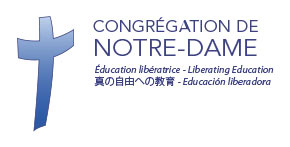Governance at the Congrégation de Notre-Dame: interview with Sister Thérèse Cloutier

Sister Thérèse Cloutier recounts the history of the Congrégation de Notre-Dame focusing on its organization and the evolution of its mission.
She recalls how, in the beginning, Marguerite Bourgeoys dreamt of a community of secular girls. In her eyes, this community would practise religious life like the women in monasteries but without being cloistered, with no distinctive habit and by going to the places where people lived.
The official authorizations arrived successively: in 1669 from Bishop de Laval, in 1671 from King of France Louis XIV and in 1698 with the Rules of the Congrégation. It was then that they were able to hold the first ceremony for the profession of vows.
In 1899, the Congrégation had approximately 1,000 Sisters spread out over several different areas. To maintain overall unity, the Mother House constituted a place for holding assorted meetings and a place for renewal and formation.
With respect to organizational structures, the 1860s were a pivotal period. The General Administration was implemented under the direction of the Congregation Leader and her council.
In 1950, the Congrégation numbered over 5,000 Sisters in the United States, Canada and Japan. It had 211 educational institutions. During the following decade, in the wake of Vatican Council II, the Congrégation revised its Rules and Constitutions and adapted to the times by expanding its mission of education to include other fields of ministry besides teaching.
